Issues, Problems and Prospects: A
Critical Review of Literature
SL Shetty
Academic Foundation, New Delhi
pp.658.
Price Rs.1,295
Historically, the State has been seized of the issue of access to financial
services to the poor. A review of the initiatives of the past century, shows that
the concern about making financial services, to the disadvantaged sections of
the society being articulated largely by the State. These articulations can be
found in the form of
[a] seeking inputs for policy making by setting up study groups,
committees, commissions, working groups and the like;
[b] institutional interventions in setting up new forms of organisations and
new initiatives in existing organisations
[c] intervention in the operations of institutions by directing them to
serve a section of the society through quotas, orders, notifications, schemes
and subsidies.
While these initiatives were happening, the State was never satisfied about
the penetration of these services and was looking to re-invent solutions to the
problem. However, what was striking in the century long interventions were that
the initiatives came from the state in state owned, state controlled
organisations. Till recently there was an absence of the private sector in this
space. Thus most solutions were supply side, welfarist solutions. Not many of
them were market-based. The history of intervention in the financial services
targeted at the poor started with the active participation of the state. A wave
of initiatives through state partnered and state promoted co-operatives
followed. This was followed by nationalization of banks, establishing Regional Rural
Banks. On the policy side there were targets for flow of financial services to
certain sections of the economy.
In the late 1990s the NGO sector actively embraced the agenda of
financial inclusion. These initiatives proved that market based solutions could
be offered in financial inclusion particularly through the provision of microcredit
services on commercially viable terms. This demonstration led to an increased
interest of the commercial world in providing services to the poor. This market
based approach also coincided with the entire market paradigm starting to
consider the poor as viable consumers of various services an “opportunity”
discovered by Prof.CK Prahalad as a Fortune at the Bottom of the Pyramid.
With the excitement of newer forms of market-based interventions in the
area of microfinance, there was an increased attention from researchers and
academics, as also from the popular press on this topic. Much was written about
how microfinance offered a silver bullet in doing good and doing well at the
same time. The attention that microfinance got and the writing that followed
was disproportionately higher than the impacts it was making. Shetty’s book is
to be seen in this context.
The
book is a scholarly piece of work and personifies Shetty who is known for his
meticulousness, dedication, eye for detail and discipline. As I was reading the book I kept trying to
look for some literature that I was familiar with, that could have missed his
attention but have to happily admit that I failed. Shetty and his team trudge
through reams of material, digest, classify, organize and critique it in a
readable manner. The book is rich with data. It is very remarkable as it offers
a lazy researcher a complete guide to the literature, significant amounts of
secondary data and leads on where one go for more, making it a researchers’
delight.
The book is organized into 9 parts. I would hesitate to call them
chapters because each part is not only a book in itself, but is also
significant in its own way.
The first part deals with the theory - locating the “market” for
microfinance. It talks about market imperfections, market failures and how they
impact the poor, with due focus on women, who almost define microfinance in the
Indian context. The theoretical elements dealt by Shetty, shows the importance
of microfinance as a concept. In focusing on the poor, microfinance started at
the far end of the poor and the excluded and tried to provide a solution for
the requirements of financial services. Microfinance was not only correcting
and intervening in what was identified as market failure [the finance for the
poor] but expanding it to the clients who were not traditionally considered by
the state as a significant group [the women, who usually were subsumed under
the category of poor]. The dual disadvantage of being poor and a woman is
brought out brilliantly by Ela Bhatt in her professional autobiography “We are
poor, but so many”. Shetty captures the essence of her argument in this part.
Most of us working in the field of rural finance succumb to one
stereotyping, and Shetty is no exception. Scholars working on the vexatious
issue of finance for the poor, use two significant pieces of data. One is data on
agriculture and the other is the data on rural areas, falling into the trap of
equating rural/agricultural finance with finance to the poor. It might not be
off the mark considering that a significant amount of poverty is in that broad
segmentation, but it ignores a significant portion of the urban poor from the
discussion leaving the urban poor off the policy radar. There is no other way
of carrying this discussion forward as the availability and organization of
data and literature is on a similar pattern. From Shetty’s discussion of the
background another element comes out: that we do not have data ordered on
gender.
In the next part Shetty deals with the origin of microfinance as a
concept and details out the players. Here he follows an interesting interplay
between [a] theoretical definitions, [b] discussions of the concept, [c] the
institutional responses and their redefinitions through notifications, product
developments, partnerships and linkages and [d] the happenings around the world
that seem to provide a greater meaning and prominence to the concept of
microfinance. This is an endearing approach that helps locate the evolution of
microfinance amidst much action across the world. Shetty deals with the multiple
definitions by getting the context that evolved the definitions and how contexts
could move and change. In addition, the players themselves have re-defined
their role vis-à-vis the clients. While this part rightly has minimal data, it
has examples demonstrating the evolution of the current concept of
microfinance.
Part 3 talks about three different models of microfinance – the NGO led
model, models run as government programs and bank led models. Each of these
models are discussed in their emerging context and the regulatory framework. In
a matter of a few pages Shetty is able to cover the setting for microfinance
looking at its genealogy, geography and orientation. Having laid out the global
landscape for microfinance, he focuses on India. This part deals with the
evolution of microfinance in India and sets the story of microfinance, dating
back to the establishment of Sewa Bank. This chapter also shows the subtle
shift in Shetty’s orientation. While the first background chapter talks about
the entire financial sector for the poor, in this chapter the focus is sharply
on what is commonly understood as microfinance. There is no discussion on
agriculture/rural. It discusses the initiatives outside of the government
programs [except for the linkage with NABARD on the SHG-Bank Linkage
programmes]. This chapter breaks away from the supply-side State sponsored
models of inclusion to the model that was proposed and implemented by others,
starting with NGOs and later by the private players. In highlighting the
initiatives Shetty brings out the data on growth, the subtle difference in
approach and also how it pans out at scale. Part 5 is a researchers’ delight.
It provides all the data that one could have had about the aspects discussed in
Part 4. It follows the operational models discussed earlier and points to not
only the data sources but also brings in significant details from specific
studies undertaken in this field.
Having looked at the evolution and the meteoric growth of microfinance in
India in particular, it then becomes important to ask the question as to
whether there was a regulatory framework under which these activities were
being undertaken. The answer for that is yes and no. While the microfinance was
being done in the available regulatory framework, it was probably an
inappropriate framework for scaling. Shetty examines this from a chronological
perspective as well as from the perspective of interest groups. While this is
in itself a brilliant work, it could have been richer if Shetty had focused a
bit on the policy towards microfinance. There was a churn on whether there
should be a bill or not, and whether microfinance should fall under central or
state government’s purview and the role of the Reserve Bank of India [RBI] etc.
On the sidelines there were policy guidelines being issued both by the finance
ministry as well as the RBI under the extant legislations. These dictated how the
sector shaped up. Shetty focuses only on the details of the regulations, the
issues that were debated and the fall-outs. It is surprising given that in the
rest of the book he has examined various layers of the issue. Regulation has
multiple layers of policy making, notifications, orders and advisories. The
regulatory machinery did not have a uni-focus on law making during the period
under question.
The next three parts look at what microfinance means to the poor - a
detailed look at impact studies and the methodological issues surrounding them;
the emerging debate on the critical issues pertaining to microfinance; and a concluding
set of recommendations.
Shetty’s book is not easy to review because of the depth and width of its
coverage. It is a book that can easily be admired, and referred to and will
serve as resource material for a long time to come. It brings in divergent
view-points, data and discussions. Shetty largely remains in the background, in
his usual understated way. However, this is a book that should form a necessary
reference material to anybody interested in microfinance and the larger issue
of financial inclusion.
As we close, we need to engage in a lingering question. Did the new
models of microfinance replace other more difficult and exploitative sources of
finance such as the moneylender? Or did the women centered microfinance include
the totally excluded segment into the formal financial sector? It is most likely
that even the moneylenders did not consider poor women as a market segment.
Therefore the importance of microfinance was in starting at the far end of
exclusion if we were to take a welfarist point of view, or in “expanding” to
create a new unexplored market segment if we were to take a Prahaladian point
of view.
We should be thankful to Shetty for undertaking this rather difficult
task and bringing out the output in such an easy and readable and referable
format.







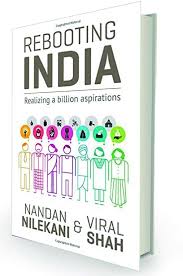








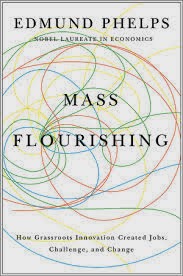









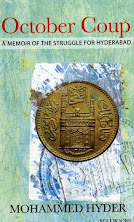

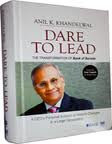
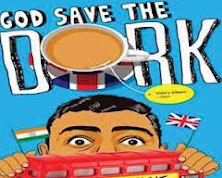













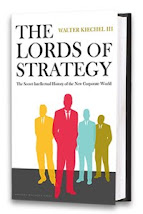











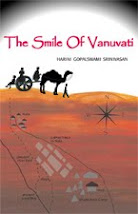


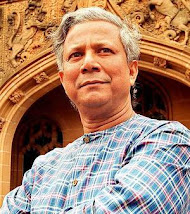








![Hyderabad: A Book [or two] and A Movie](http://3.bp.blogspot.com/_mxWA9ZVkKhQ/S0vnLAO90CI/AAAAAAAABYM/WgbSbAcAaEk/S214/luther1.0.jpg)

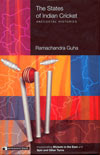





![Two Lives [and this is not about Vikram Seth]](http://1.bp.blogspot.com/_mxWA9ZVkKhQ/S0vjkyDYRvI/AAAAAAAABXM/mJGK-_gZiNg/S214/mansur.jpg)





No comments:
Post a Comment